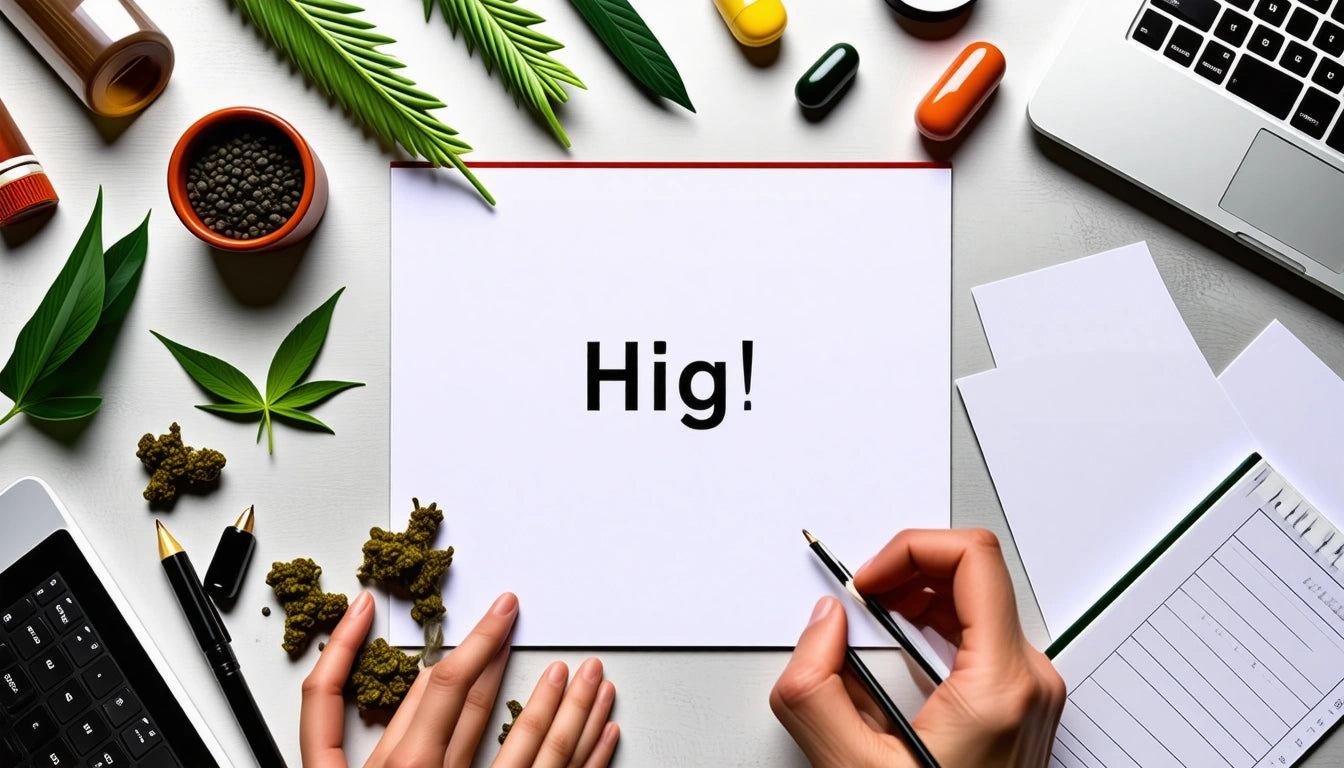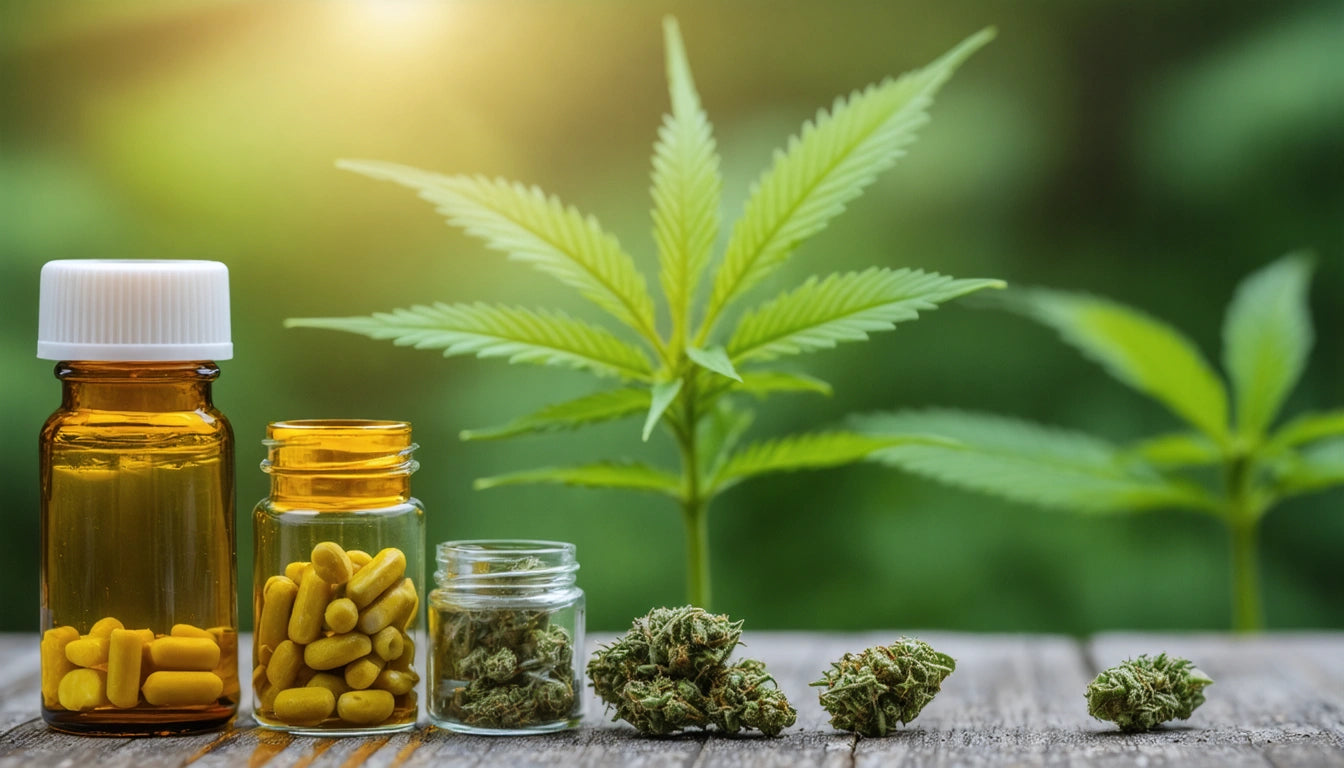Table of Contents
How to Recognize If You're High: Signs and Awareness
Understanding how to tell if you're high is essential for both new and experienced cannabis users. Recognizing the signs helps ensure a safer, more enjoyable experience and prevents uncomfortable situations. This guide explores the physical, mental, and behavioral indicators that can help you identify when cannabis has taken effect.
Physical Signs You're High
Your body provides clear signals when cannabis compounds enter your system. Common physical indicators include:
- Reddened eyes with dilated pupils
- Dry mouth (cottonmouth)
- Increased heart rate
- Changes in body temperature (feeling warmer or cooler)
- Heightened sensory perception
These physical manifestations vary in intensity depending on the consumption method, dosage, and strain. As explained in this visual guide to being high, external signs can be noticeable to others even when you might not be fully aware of them yourself.
Sensory Changes
Cannabis often enhances or alters sensory experiences. You might notice:
- Colors appear more vibrant
- Sounds seem clearer or more dimensional
- Food tastes more intense or appealing
- Touch sensations feel heightened or different
These sensory shifts are among the first indicators that help you know when you're high, especially for those wondering how to tell if they're high for the first time.
Mental and Cognitive Indicators of Being High
Mental effects often provide the clearest answer to "how do you know you are high?" These cognitive changes include:
- Altered perception of time (usually slowing)
- Enhanced creativity or new thought patterns
- Short-term memory changes
- Difficulty concentrating on complex tasks
- Increased introspection or philosophical thinking
For many users, these mental shifts are the primary way they recognize what being high feels like. Your thought processes may become more fluid, creative, or conversely, more scattered depending on the strain and your individual response.
Behavioral Changes That Signal You're High
Your actions and behaviors often change subtly when cannabis takes effect:
- Increased laughter or finding things unusually amusing
- Changes in verbal communication (talking more or less)
- Altered social dynamics
- Different movement patterns (slower or more deliberate)
- Food cravings (the munchies)
These behavioral indicators are sometimes noticed by others before you recognize them yourself. Many users report that friends often point out these changes, helping them realize they're experiencing the effects of cannabis.
When using cannabis products, proper storage is essential for maintaining potency and freshness. Many consumers use specialized cannabis storage bags that preserve terpenes and cannabinoids while preventing odor leakage, ensuring your experience remains consistent each time.
Developing Personal Awareness of Your High
Learning how to tell when you're high becomes easier with experience. Consider these approaches:
- Keep a journal of effects and sensations
- Note the timing between consumption and first effects
- Identify your personal "tells" that indicate cannabis has taken effect
- Practice mindfulness to increase body awareness
This self-awareness helps answer the question "how can you tell when you're high" in a personalized way. Each individual experiences cannabis differently, so your indicators may vary from what others report.
Testing Methods and Self-Assessment Techniques
If you're wondering how to tell if you're high, try these self-assessment techniques:
The Red Eye Test
Check your eyes in a mirror. Reddened eyes with dilated pupils are classic signs of cannabis use due to THC's effect on blood vessels and pressure.
Coordination Tests
Simple tests like touching your nose with your finger or standing on one foot can reveal subtle impairments in coordination and balance.
Time Perception Check
Set a timer for one minute and see if you can accurately gauge when it ends without looking. Cannabis typically distorts time perception, making minutes feel much longer.
These self-checks can be particularly useful for those wondering how to understand their high experience more objectively.
Law Enforcement Testing
For those concerned about "how do they test if you're driving high," it's important to note that law enforcement may use:
- Field sobriety tests
- Blood tests that detect THC
- Specialized drug recognition experts
- Saliva or urine testing in some jurisdictions
Unlike alcohol, cannabis impairment testing remains challenging and varies by location.
Responsible Usage and Knowing Your Limits
Understanding how to recognize when you're high is fundamental to responsible cannabis use. This awareness helps you:
- Avoid overconsumption and potential anxiety
- Make safer decisions about activities like driving
- Adjust dosage for desired effects
- Develop a healthier relationship with cannabis
If you find yourself uncomfortably high, there are effective strategies to reduce the effects including hydration, black pepper consumption, and creating a calm environment.
By learning to recognize your personal indicators of being high, you can enjoy cannabis more responsibly and with greater confidence. Whether you're a medical patient or recreational user, this self-awareness becomes an essential skill for navigating your cannabis journey safely and enjoyably.











Leave a comment
All comments are moderated before being published.
This site is protected by hCaptcha and the hCaptcha Privacy Policy and Terms of Service apply.